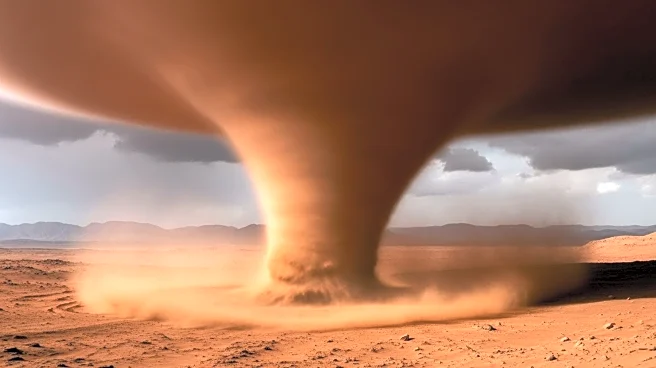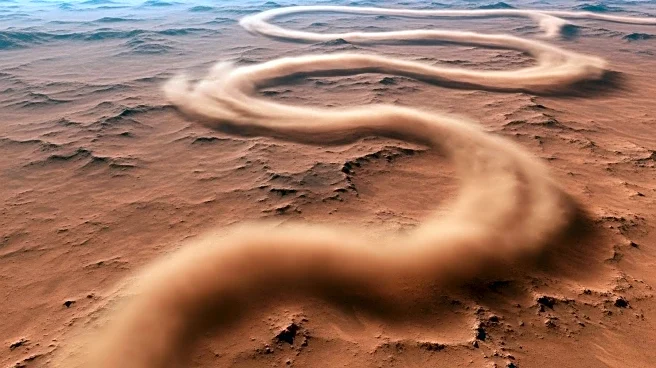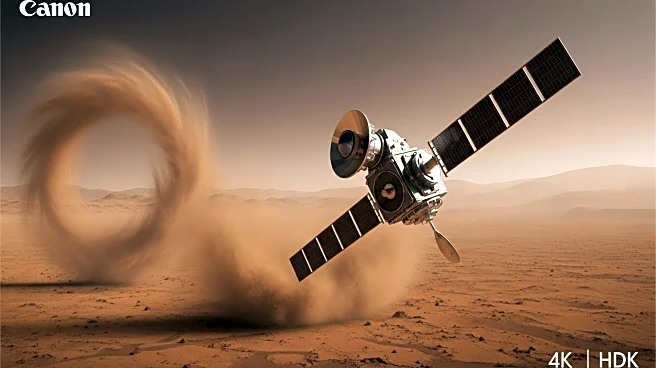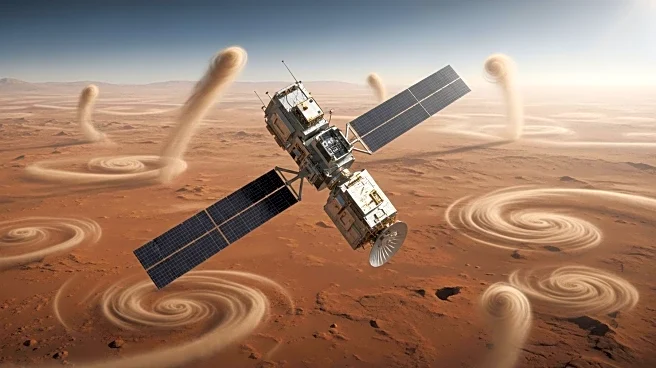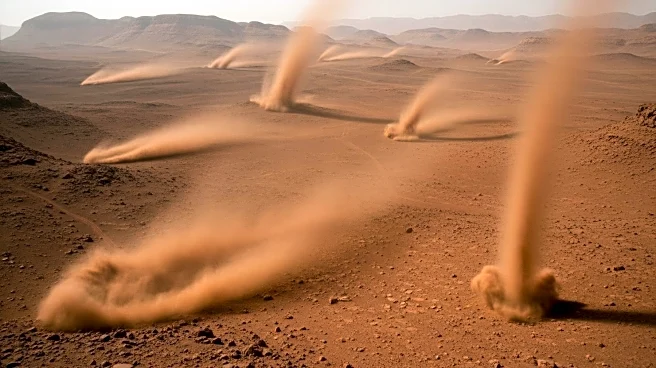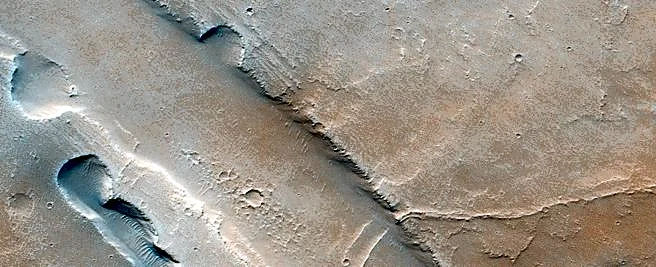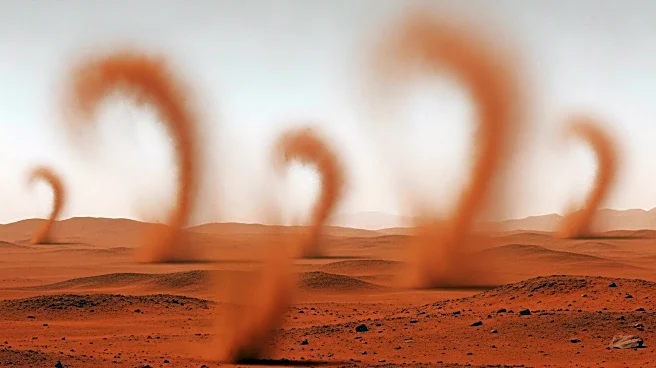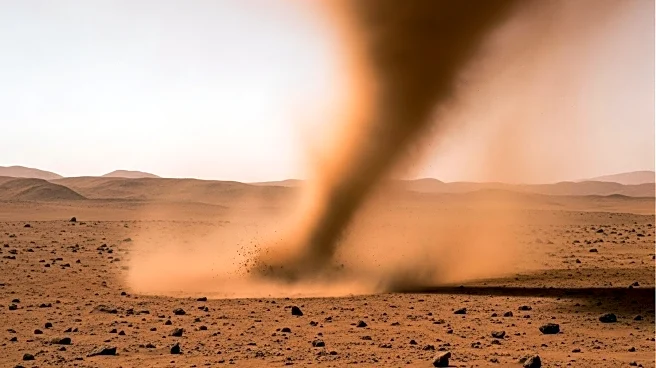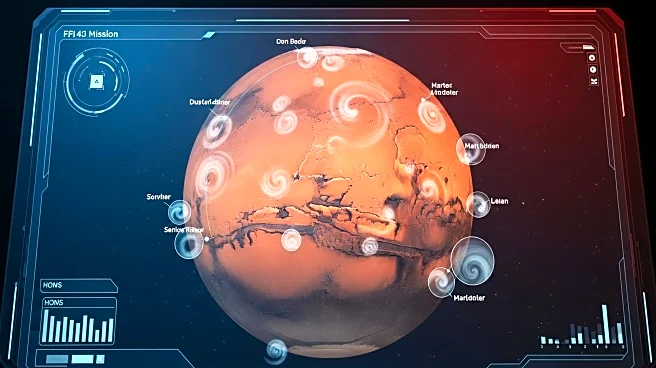What's Happening?
Recent research led by Dr. Valentin Bickel from the University of Bern has uncovered that Martian dust devils and the winds driving them are much faster than previously thought. Utilizing deep learning techniques, the study analyzed over 50,000 satellite images from the European Space Agency's Mars exploration missions. The findings indicate that these dust devils can reach speeds of up to 160 km/h, significantly impacting the Martian atmosphere and climate. The research, published in Science Advances, highlights the importance of understanding wind dynamics on Mars for future missions.
Why It's Important?
The discovery of faster-than-expected winds on Mars has significant implications for future exploration missions. Understanding wind conditions is crucial for planning and executing missions, as these winds can affect landing sites and the operation of equipment. The insights gained from this study can improve atmospheric models, aiding in the assessment of risks and the adaptation of technical systems for Mars missions. This research also contributes to the understanding of Martian surface processes, such as dune formation and slope streaks, which are vital for developing accurate weather and climate models.
What's Next?
The research team plans to continue observing dust devils on Mars, using coordinated observations from the CaSSIS and HRSC cameras. These efforts aim to refine the understanding of wind dynamics on Mars, potentially leading to more efficient planning of future missions. The study's findings will be integrated into models that assess the risks associated with Martian exploration, particularly for missions relying on solar power. As the research progresses, it may provide further insights into the planet's atmospheric conditions, aiding in the development of strategies for human exploration.

